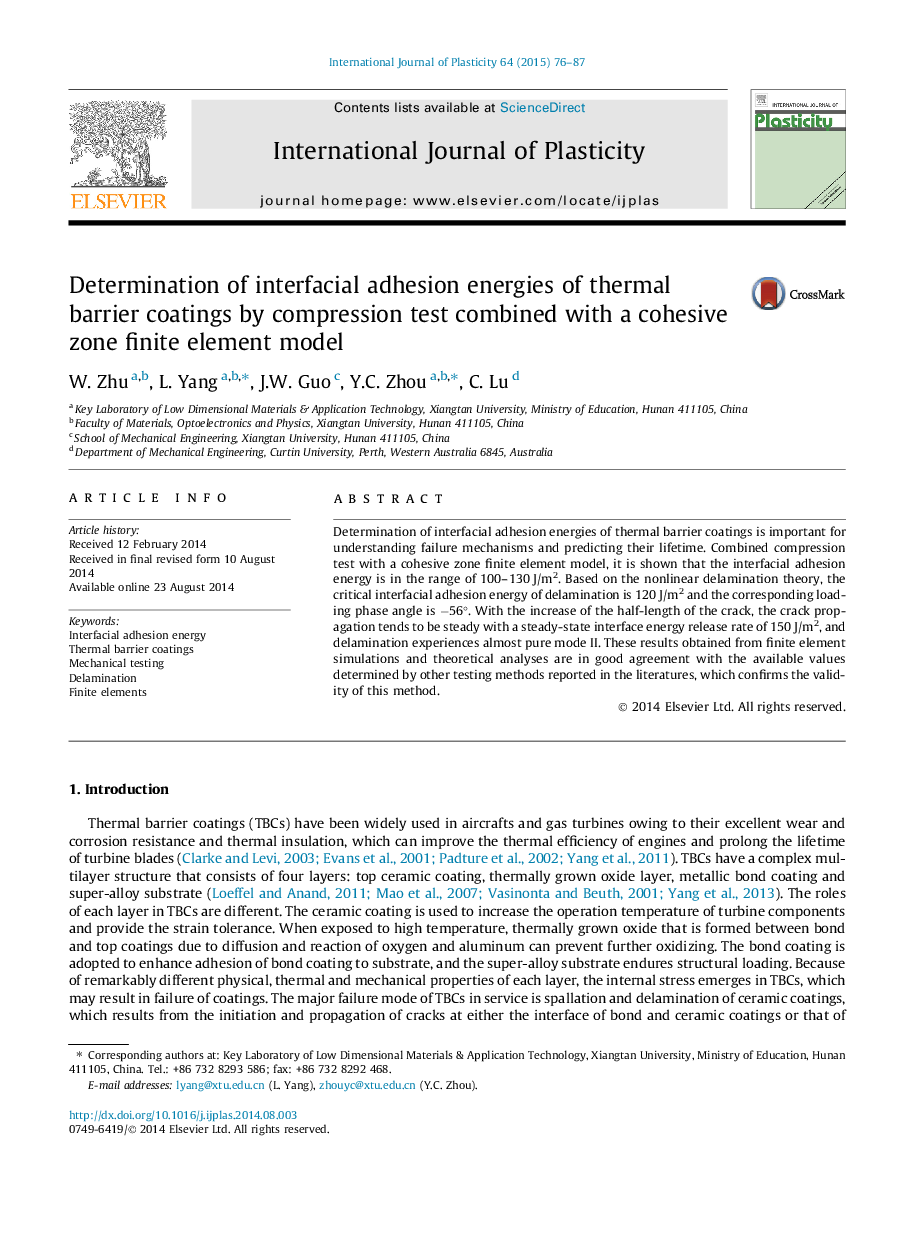| Article ID | Journal | Published Year | Pages | File Type |
|---|---|---|---|---|
| 786447 | International Journal of Plasticity | 2015 | 12 Pages |
•Interfacial adhesion energy of TBCs was determined by compression tests.•The evolution of buckle delamination was captured by AE and CCD camera.•A cohesive zone model was developed to mimic the delamination process.•The evaluated interfacial adhesion energy is consistent with FEM simulations.
Determination of interfacial adhesion energies of thermal barrier coatings is important for understanding failure mechanisms and predicting their lifetime. Combined compression test with a cohesive zone finite element model, it is shown that the interfacial adhesion energy is in the range of 100–130 J/m2. Based on the nonlinear delamination theory, the critical interfacial adhesion energy of delamination is 120 J/m2 and the corresponding loading phase angle is −56°. With the increase of the half-length of the crack, the crack propagation tends to be steady with a steady-state interface energy release rate of 150 J/m2, and delamination experiences almost pure mode II. These results obtained from finite element simulations and theoretical analyses are in good agreement with the available values determined by other testing methods reported in the literatures, which confirms the validity of this method.
